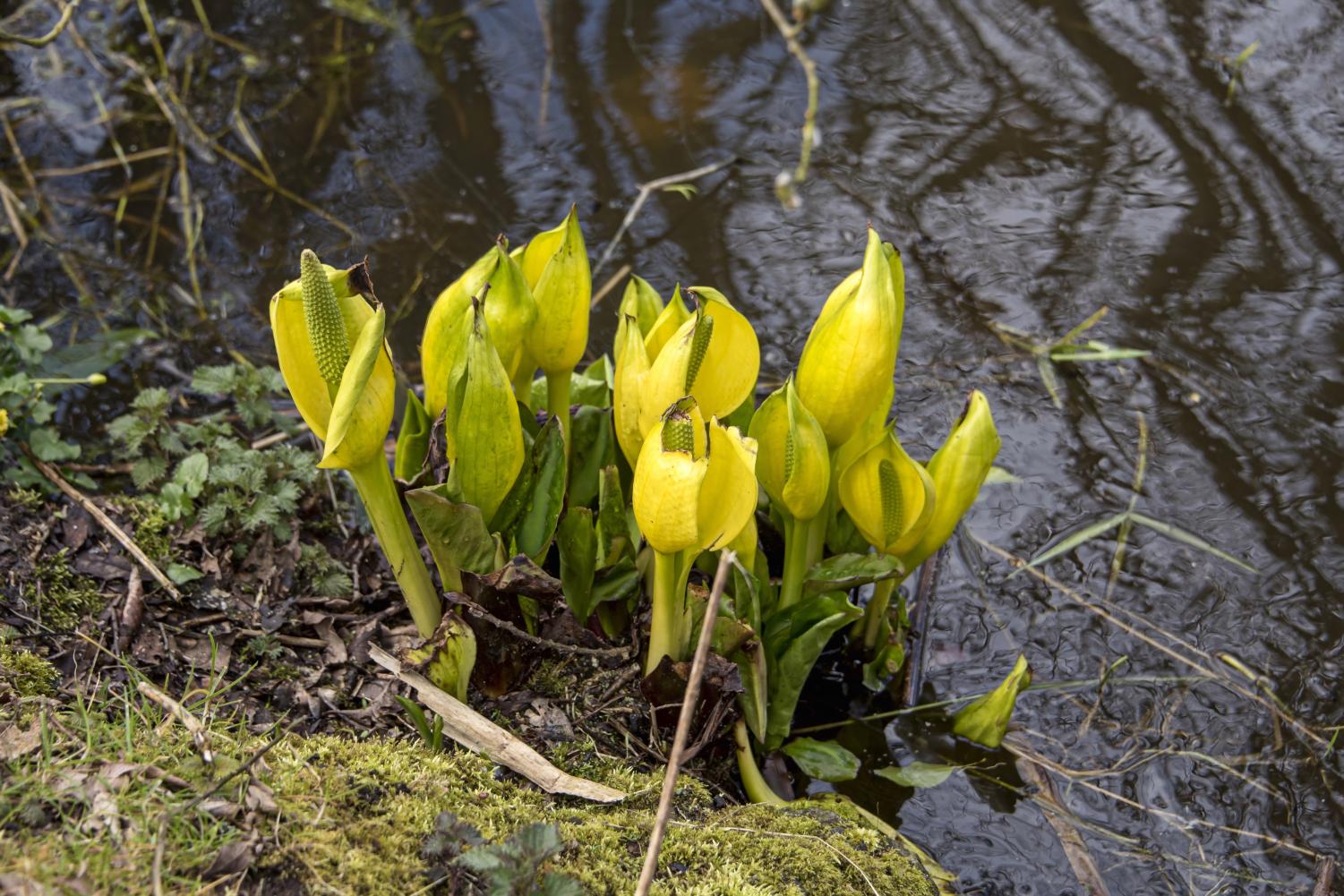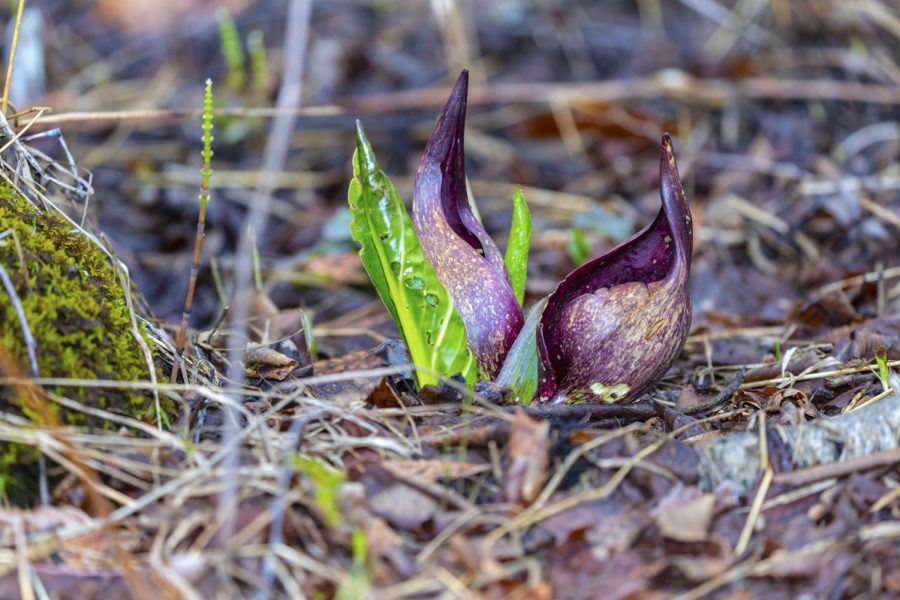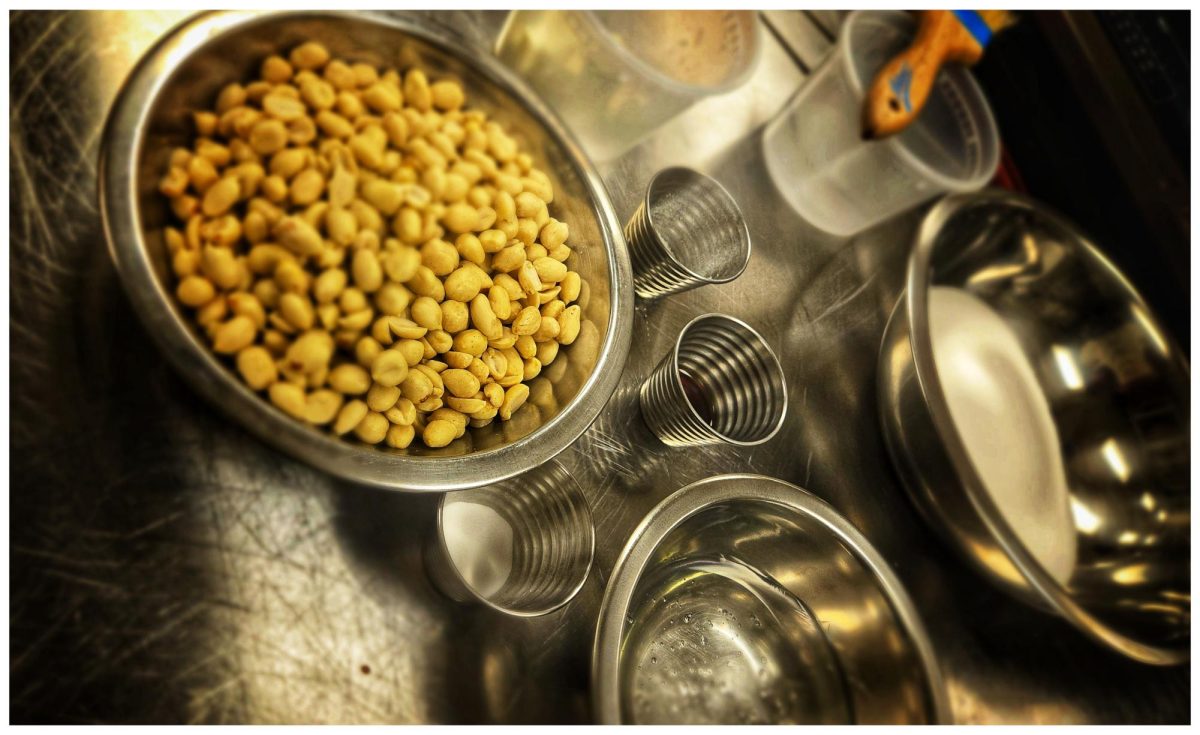The Stinky Herald
The malodorous scents produced by this fascinating plant are appetizing to some…
February 20, 2023
With a recent study having documented more than 400,000 species worldwide, plants have accumulated an incredibly diverse array of adaptive survival and reproductive mechanisms. The Maryland-native Eastern skunk cabbage (Symplocarpus foetidus) has acquired some amazing abilities of its own: the plant itself thaws through frozen soil and emerges into the grip of winter, blooming even before the dawn of spring.
The incredible process that makes this possible is called thermogenesis: skunk cabbage can produce its own body heat! By burning starches (sugars) stored in the roots from the year prior, the plant is capable of heating itself to seventy degrees Fahrenheit, allowing it to grow straight through a patch of frozen ground and melt through snow. This offers an advantageous guarantee of a plethora of growing space and sunlight; as an early riser, skunk cabbage shirks the competition before any sleepy plants even break dormancy, thereby jumpstarting the coming season.
To accompany its bubble of warmth, skunk cabbage also releases two scent chemicals—putrescine and cadaverine (it’s called skunk cabbage for a reason!)—which act like magnets to draw in pollinators to the flowers, particularly carrion beetles and flies. The smell of rotting flesh is just…irresistible. For some organisms, at least.

Eastern skunk cabbage grows in very wet soils, like those found along streams, swamps or within bogs. An excellent place to find the plant growing in droves is all along the Robinson Nature Center’s “Skunk Cabbage Creek,” minutes away from Howard Community College.
The flowers of the plant are numerous, super tiny and attached to a funky fleshy bulbous structure that, altogether, kind of looks like an inverted skep beehive, or an upside-down, bumpy round basket. A teepee-like structure called a spathe encapsulates the inflorescence, offering protection to the flowers and helping to entrap some of the heat emanating from within. Genetic diversity paints the plants with different patterns; some spathes are variegated with yellow while some are just purple, and spadices too alternate between these colors.
The leaves, when they emerge, are gargantuan, growing up to three feet long by one foot wide—it takes a lot of energy to heat up to seventy degrees! Undergoing photosynthesis, the leaves are the generators of the sugars that will, next year, be burned to spread the stinky signal that spring is almost here.








